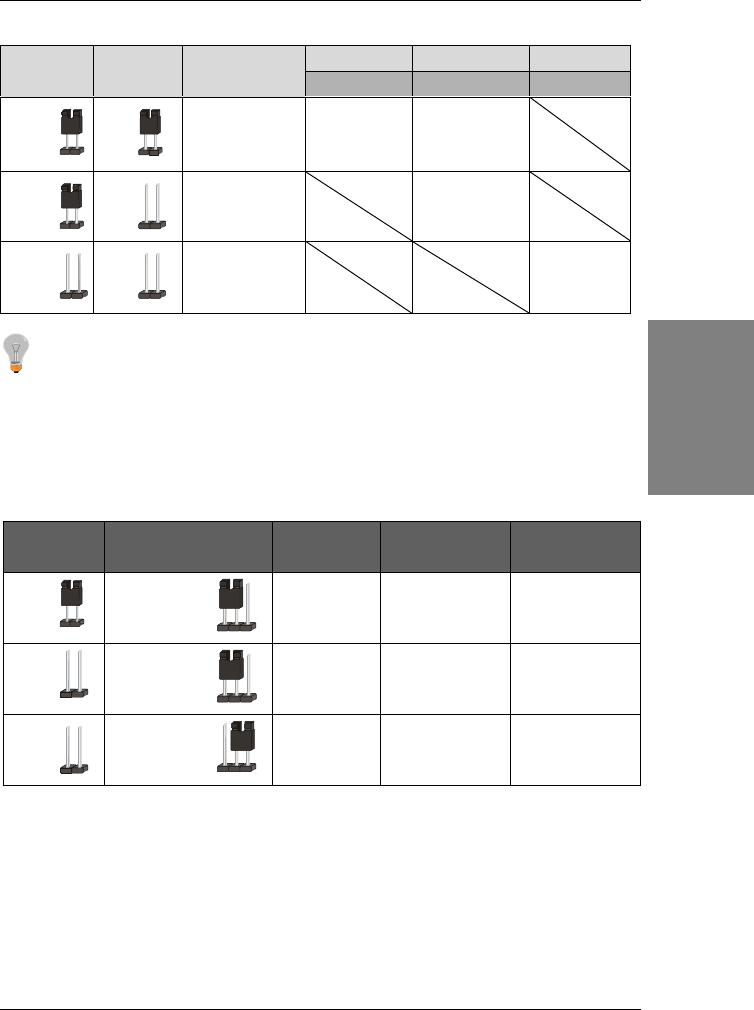
SY-6VBA 133
Quick Start Guide
9
Hardware
Installation
Refer to the following table:
PII, Celeron PII,PIII PIII
JP9
133/100#
JP8
100/66#
tell CPU its
FSB Speed
66MHz FSB 100MHz FSB 133MHz FSB
Short Short FSB = 66MHz Normal setting
*
Possible higher
multiplier setting
Short Open
FSB = 100MHz
Normal setting
Open Open FSB = 133MHz
Normal
setting
*
This setting will tell CPU that it is running on 66MHz; this will release more multiplier
settings on some Intel CPUs, but it will make the system operate out of its
specifications if the actual FSB frequency is 100MHz higher.
Step 5. FSB boot-up frequency and AGP divider: JP2 and JP7
The settings of JP2 and JP7 determine the FSB frequency at boot-up, and more important,
they determine the AGP divider and the group of FSB frequencies that can be selected in the
BIOS. Refer to the following table:
JP7 JP2
Boot-up
FSB
BIOS FSB
group
AGP divider
Short Short Pin 1-2 66 66~83 1
Open Short pin 1-2 100 90~122 1.5
Open Short pin 2-3 133 124~155 2.0
As example, if JP7 is set to open and JP2 to (1-2), the boot-up FSB frequency will be
100MHz. When the BIOS takes control, it will write the BIOS FSB setting to the clock
generator. This happens shortly after power-up, and the FSB frequency will then be in
accordance to the BIOS setting. The group from which the FSB Frequency can be selected
in the BIOS is 90~122MHz and AGP Clock will be 60~81MHz. Note that all FSB
Frequencies are available in the BIOS, but that only those in the group as determined by JP2
and JP7 will have effect when selected.
1
2
1
2
1
2
1
2
3
1
2
3
1
2
3
1
2
1
2
1
2
1
2
1
2
1
2


















